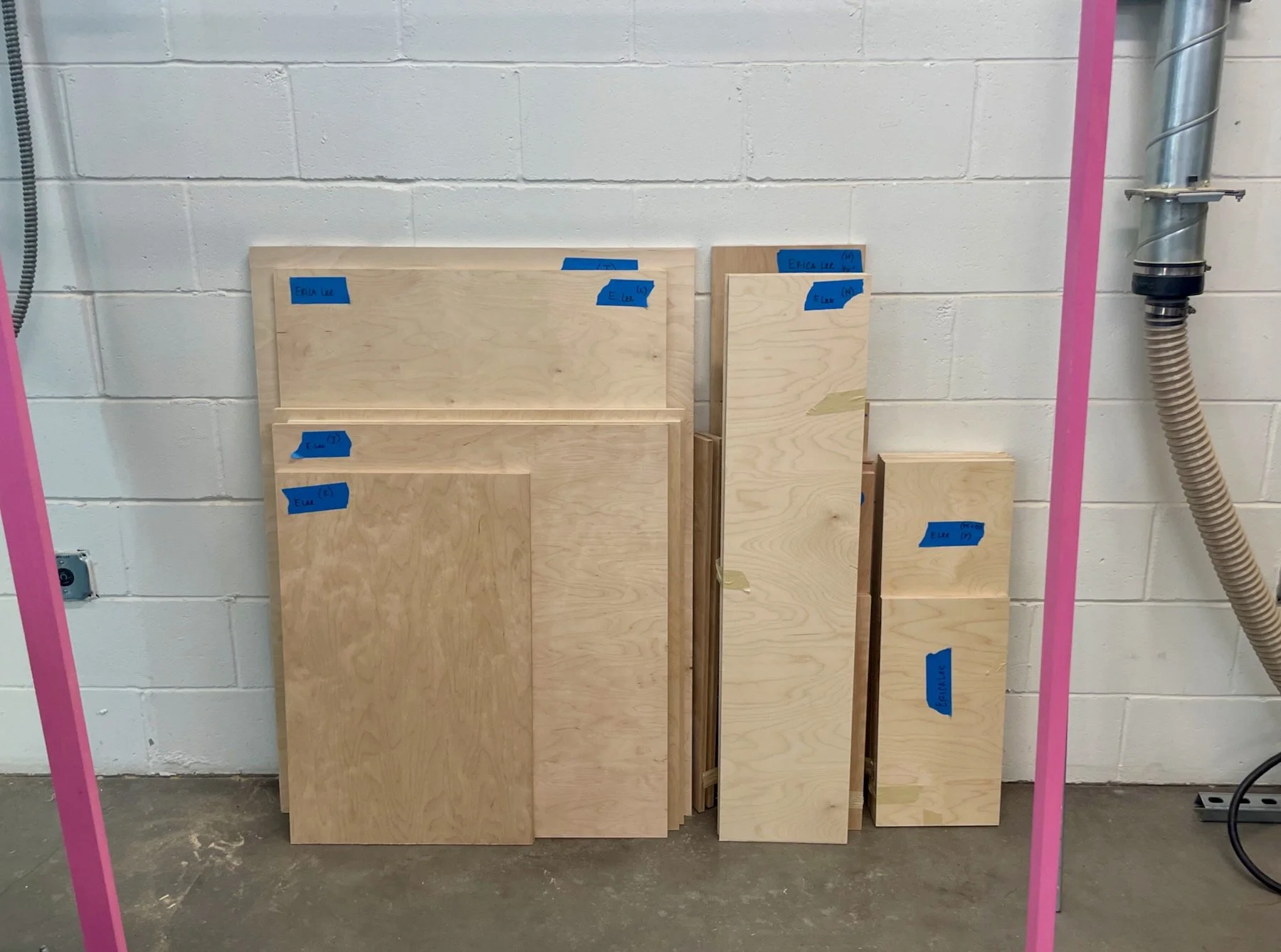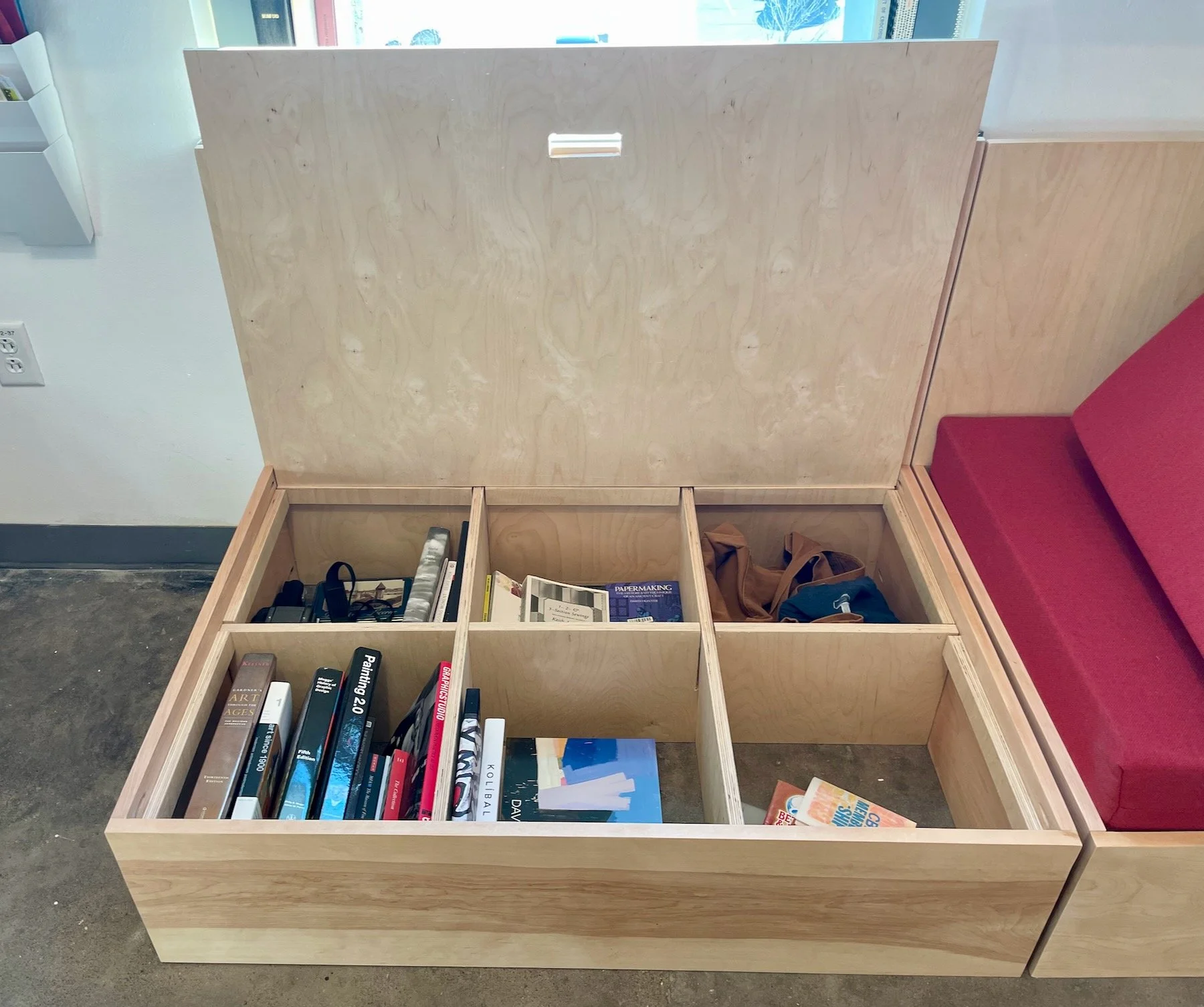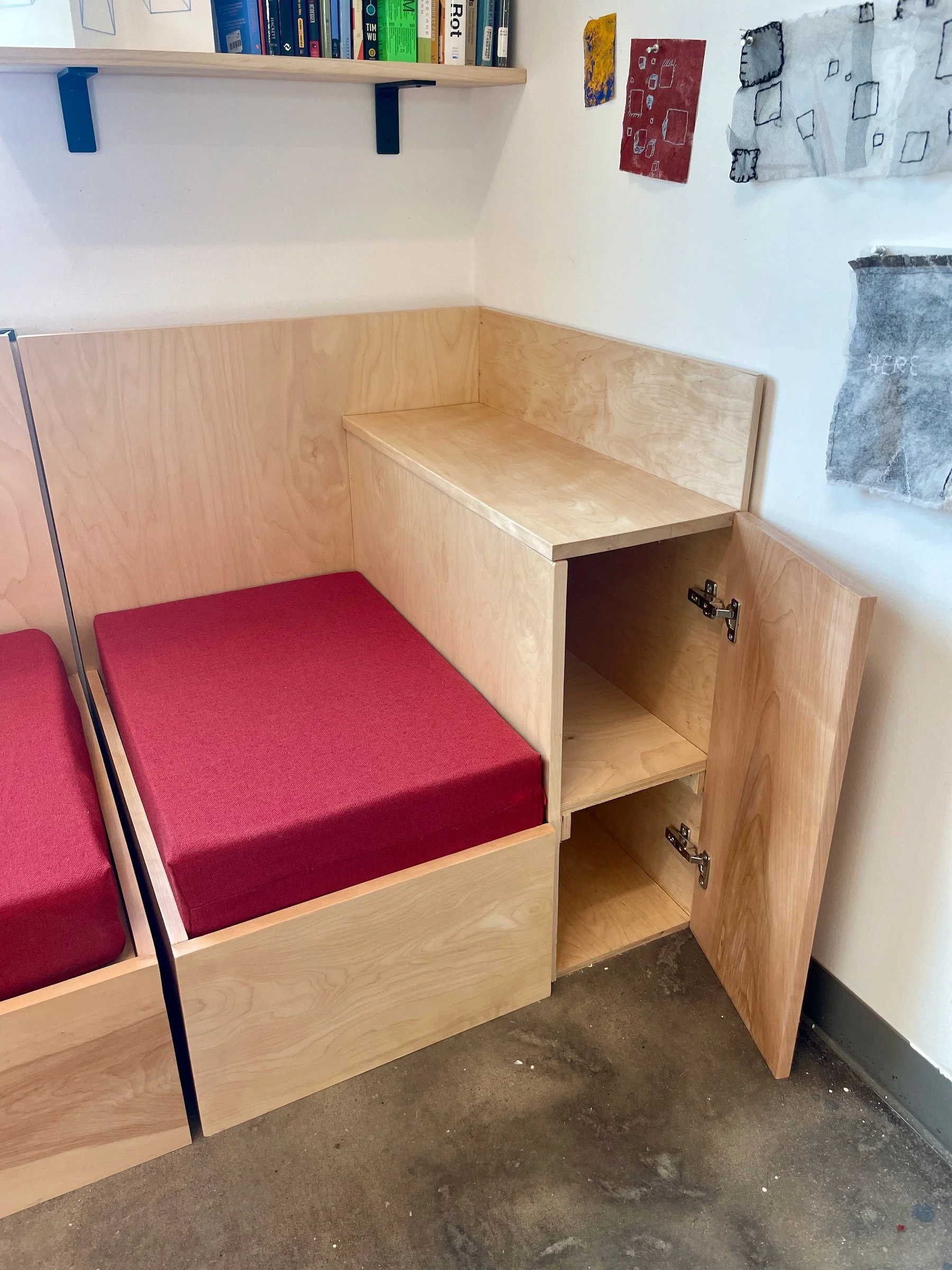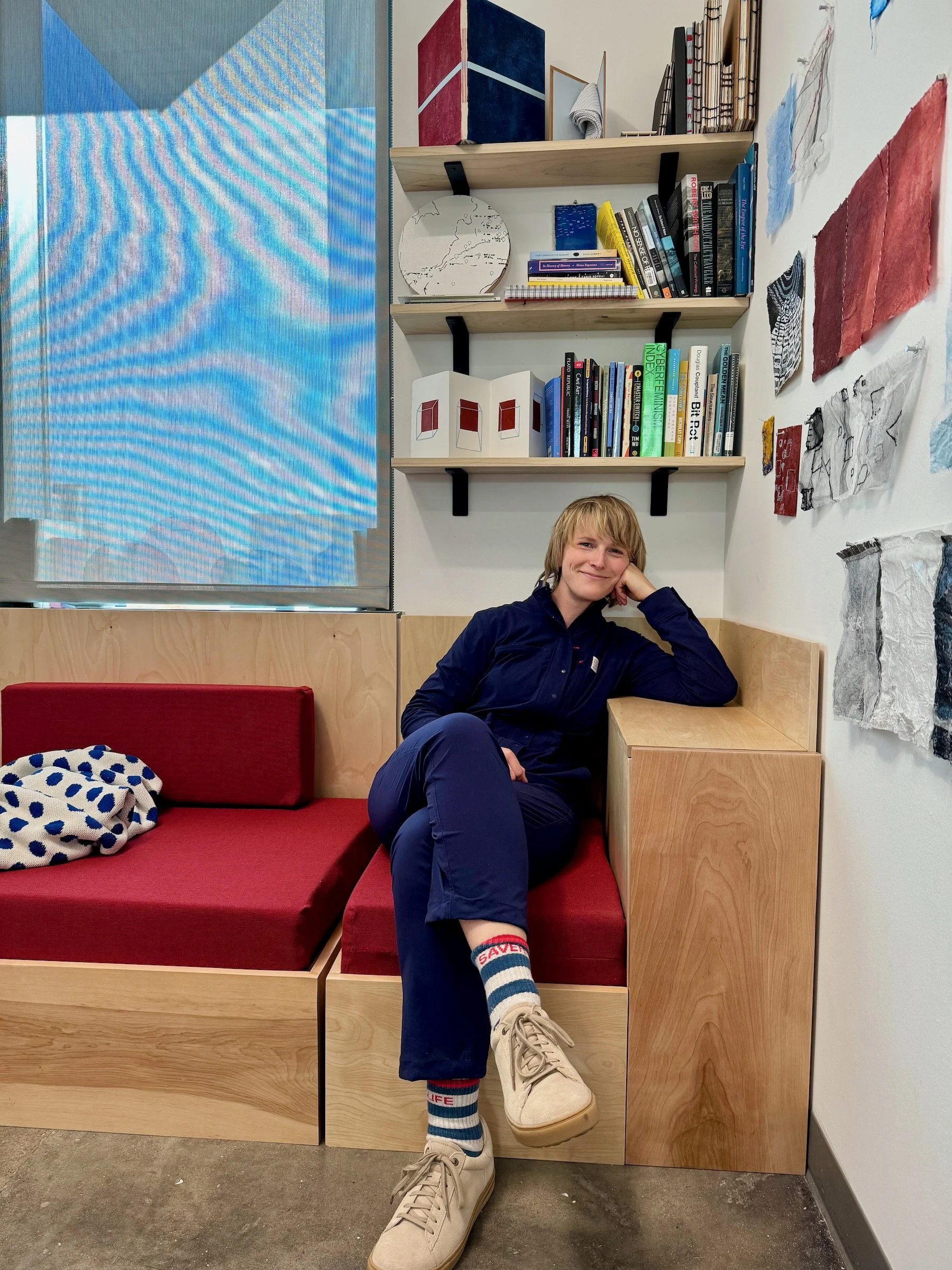The flat plane and its impenetrable screen-like surface have become frustrating over the past few years. Subsequently, my work has often veered away from individual paintings towards installation, curation, and objects.
Objects are tangible–only shared and experienced in physical space. And, objects encourage viewers to move, touch (sometimes), and experience the work in real time. This is all very much unlike the ubiquitous and omnipresent flat image distributed, obfuscated, and quickly consumed on digital devices in isolated environments.
So this past fall I took to wood fabrication and sought a project that would make me feel more comfortable working with power tools and three dimensionally. Having recently moved into my studio at The University of Houston, I quickly learned that a sofa was an essential piece of studio furniture. So, building a sofa became my first project.
Cut wood for sofa project.
In Marfa, I admired Donald Judd’s forthright furniture, so I opted for a design inspired by his work. For a couple of weeks I danced around the complexity of the design. I wanted to somehow incorporate plexiglass and filter the natural light offered by my studio’s window. Artist Matt Scobey has been experimenting with this process in Marfa. In the end, however, I decided to focus purely on the wood construction as this was my first furniture build.
Sketch for studio sofa.
The sofa would be simple and functional–a place to sit, read, lie down, work on my computer, and store items. I tailored the design to fit the studio space: the sofa would fit underneath the window and stretch to the corner wall. I chose to break it up into two modular pieces for some flexibility in the future.
Book storage underneath the sofa.
I chose solid birch wood and birch plywood for the backing and support. Thinking through the design and the build were time consuming, but I was grateful that I took it slow as very few surprises arose during the construction process.
For the cushions, I bought foam and sewed some simple cushion covers. Making a least one reference to my larger art practice, I chose a deep red as this object, the sofa, was something physical, visceral, and literal. If I had incorporated plexiglass, it would have been blue.
Is the sofa I made a piece of art? No, not really. And, after studying Judd a little more closely, I learned that he didn’t think of his furniture as art either: “Furniture and architecture can only be approached as such. Art cannot be imposed upon them” (Donald Judd, “On Furniture”, 1986). He was a purist and didn’t believe that function could be blended. He (somehow) had the means to do this religiously with his daily routines–dividing his Spring Street Building into different floors with specific functions and assigning roles to specific properties he owned in Marfa. He was human, however, and he contradicted himself. His furniture became artwork, and his artwork veered closely to furniture.
Photo by Jade Mellor.





